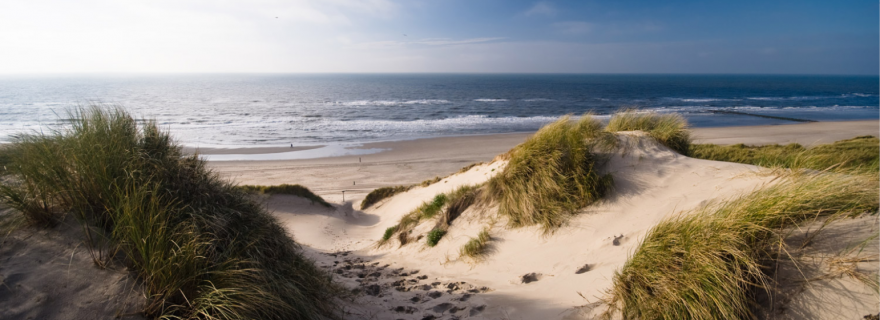Dune protection and “environmental law” in late medieval Zeeland
This blog post provides examples of coastal conservation and protection acts from late medieval Zeeland which challenge the idea that regulating environmental damage is a modern concept.
In the late fifteenth century, the inhabitants of the medieval Low Countries became aware that their activities in the dunes and tidal flats negatively impacted their functioning as natural flood protection barriers. The legislation that was written to counteract such actions may well be regarded as a type of early environmental law, although the motives for its promulgation can hardly be called ideological.
In this post, I would like to introduce the reader to some examples of this kind of legislation for it provides a fascinating insight in how medieval village communities damaged their own flood defences and struggled with regulating behaviour to prevent such damage.
Zeeland
In the Middle Ages, the Dutch coast with its numerous islands, salt marshes and mud flats relied on a row of sandy dunes to protect most of the arable land from the sea. For this reason, medieval authorities started to plant beach grass from the thirteenth century onwards hoping to counteract sand drift and flood damage to the valuable dune strip (cf. Rentenaar 1977).
Especially the county of Zeeland with its many tidal inlets was vulnerable to tidal surges and storms; during the Saint-Elizabeth’s flood of 1421 and the first Saint Cosmas and Damian’s flood of 1477, part of the dune row was washed away and entire villages were swallowed by the tide. These events prompted the local authorities to draft legislation aiming to prevent further damage to the dunes. The dune protection measures that were taken by the community of Zoutelande, a village on the Zeelandish island of Walcheren, were included in the seignorial statutes of 1499 and are surprisingly modern in their outlook and wording.
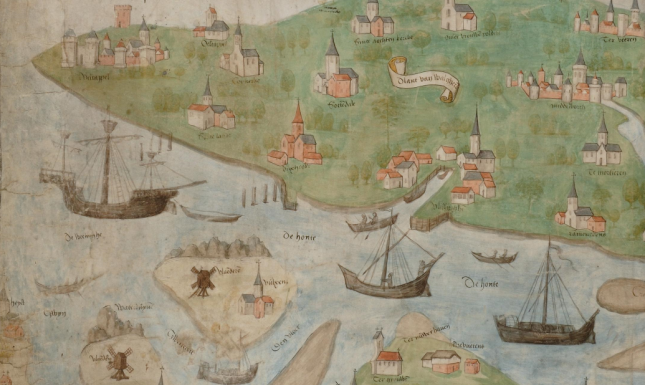

The seignorial statutes of Zoutelande
The seignorial statutes of Zoutelande were written down on behest of Anna of Burgundy, sovereign over much of the Zeeland isles of Walcheren and Duiveland as well as a notable figure in the politics of the late medieval Low Countries [1]. The statutes are preserved in two manuscripts, the oldest of which dates back to the early sixteenth century (ZE 33.1, inv. 1023).
The subject matter of the statutes consisted of such mundane issues as keeping the streets clean, municipal garbage disposal and maintaining fire safety standards. Other regulations involve the setting of fines for adultery and the prohibition of swearing and serving alcohol during high mass. Relevant for this blogpost, however, are the following stipulations which were intended to protect the dunes against damage caused by human activities (translated from the ed. by Unger 1917: 195-196).
1. No carter when traversing the dunes with a hand cart or horse cart is allowed to leave the designated cart track on penalty of five groats every time this offence occurs. The bailiff will personally deal with the carter so that he may see the damage himself or have the offence confirmed by two witnesses.
2. In order to protect the dunes from damage, spreading out fishing nets, sails or other gear in the dunes is only allowed within the village of Zoutelande and not outside of it on penalty of five groats every times this offence occurs.
3. No one is allowed to cut or pull out beach grass in the dune area surrounding the village on penalty of five groats.
4. No one is allowed to put mooring poles or hang nets in the dunes on penalty of five groats.
5. No one is allowed to have their animals wander the dunes, whether they be cows, horses, sheep or other animals, on penalty of five groats every time this offence occurs. The same goes for pigs, unless they have been ringed.
6. In order to protect the dunes from damage, no one is allowed to leave the designated path, on penalty of five groats.
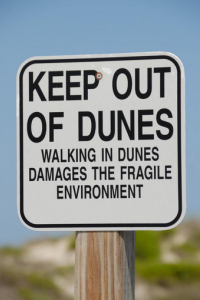
What may strike the Dutch reader is that some of these measures look surprisingly modern. Also nowadays, warning signs admonish visitors to refrain from damaging the beach grass and special paths for foot and ‘cart’ traffic are designated so as to conserve the dunes as much as possible. Also interesting is that in 1499 the offence of driving a cart off-track through the dunes was deemed so serious that the bailiff had to deal with the issue himself. The modern equivalent to that would be the chief of police dealing with environmental crimes personally.
Westkapelle
There is good evidence to suggest that, despite this kind of legislation, the local communities of Walcheren did not change their harmful ways and kept on using the dunes according to their pre-existing habits. Insightful is the following municipal decree from the town of Westkapelle, issued only two years after the devastating second Saint Cosmas and Damian’s flood of 1509.
The text of this decree from 1511 recounts that a complaint had been filed by the Estates of the island of Walcheren to the town of Westkapelle on account of the many wrongdoings that were observed in the seigneury on the topic of dune conservation. It also calls to memory that the flood of 1509 did significant damage to the dunes and had left the island in a miserable state, as we may read in the following excerpt.
“…that the dunes and the dikes have greatly been lowered by the large tides and storms that we suffer daily and too few measures are and have been taken against this on account of the large flood that has left our countryside in a heavy and troubling state, as one can well observe, and what is worse, despite there being very few dunes planted with beach grass left, many people of the community still let their animals (to wit horses, cows, calves, yearlings, bulls, sheep and also pigs) wander around the dunes where they do great damage by eating the grass, walking over the sand hills and rutting and trampling them apart”.
(translated from the ed. by Unger 1921: 301)
It may be clear that even though preserving the dunes was a matter of pure self-preservation for the local communities, without additional legislation the inhabitants of Westkapelle were not likely to amend their behaviour. For this reason, the city council of Westkapelle decreed that a local functionary (“schutter”) would be hired to catch all loose animals; furthermore, all those in violation would be fined double, raising the fine from six groats to twelve groats. By doing so, the city council hoped to enforce dune conservation efforts in a more serious manner.
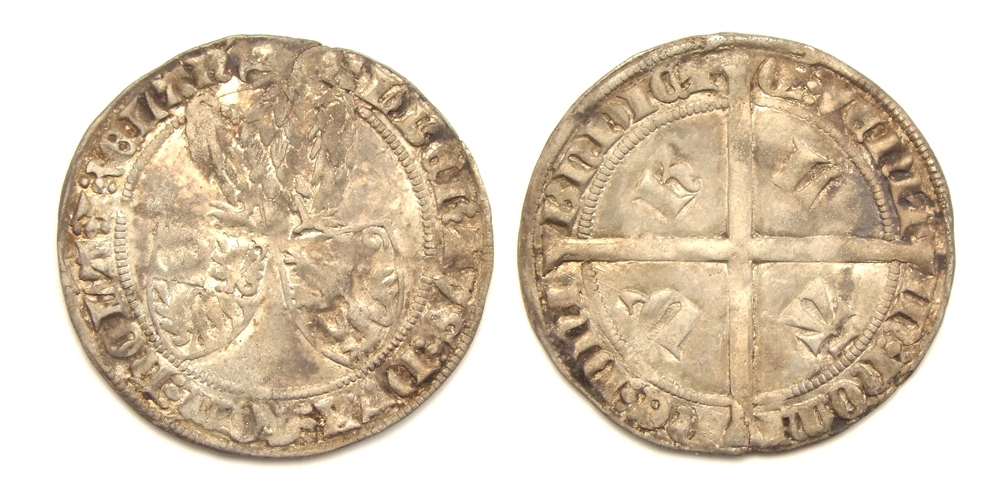
Silver groat struck under Albert of Bavaria, Count of Holland, Zeeland and Hainaut, Dordrecht, 1389-1404. Source: Wikimedia.
Conclusion
In this blogpost, I have focussed on two administrative sources from the late fifteenth and early sixteenth century that provide a remarkable window on how the inhabitants of Walcheren were balancing economic interests and environmental concerns on an issue where public safety was at stake. They testify to a five hundred year old tradition of protecting the dunes for flood protection purposes. Furthermore, these texts show that even in the past, people did not always act in their best interest, even when tragedy was in living memory and many lives were on the line.
[1] Anna of Burgundy is best known for having been the governess of Maria of Burgundy, the famous regent of the Netherlands who issued the Great Privilege of 1477.
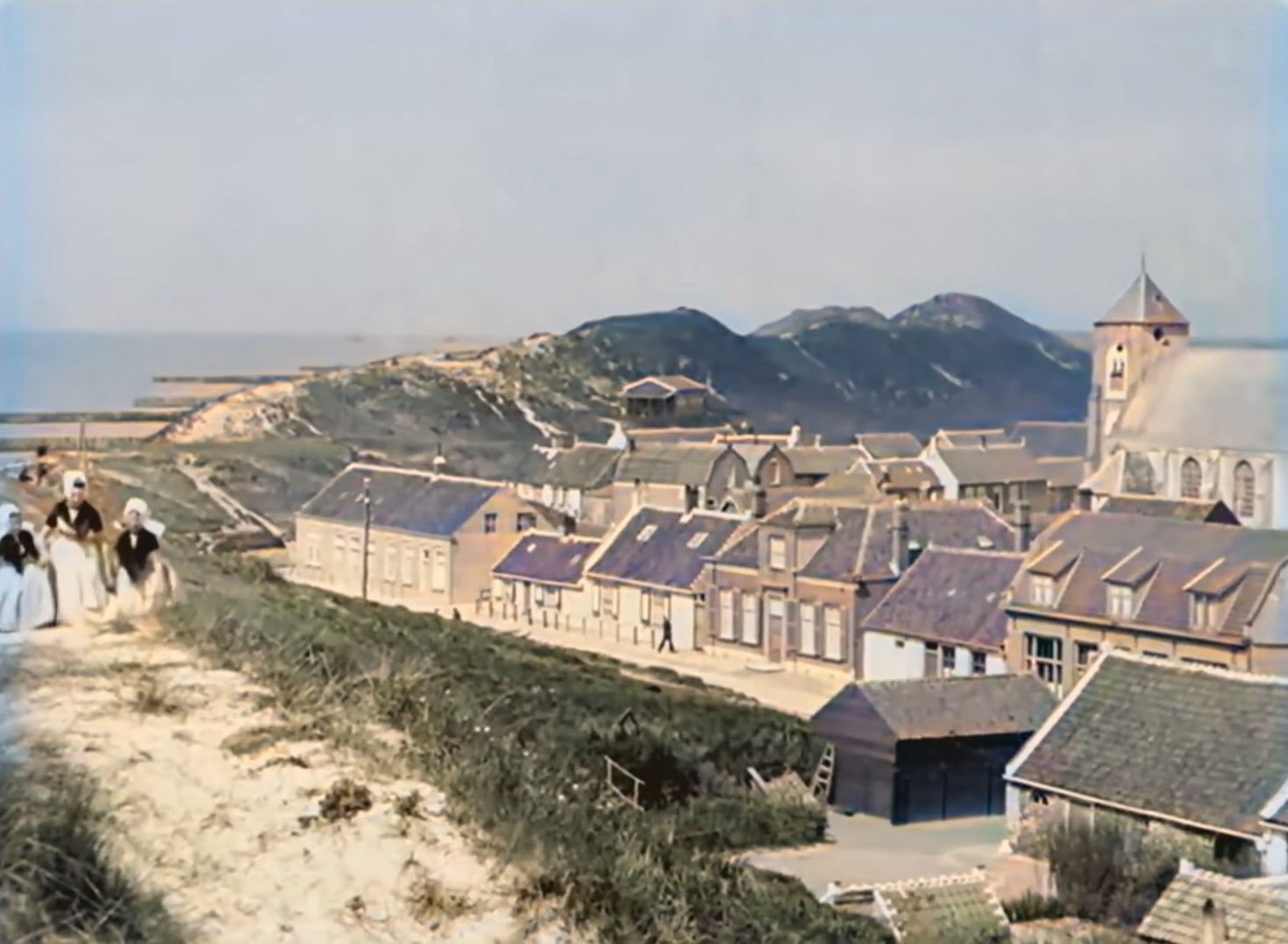
Still frame from a recording by the Netherlands Institute for Sound and Vision of the village Zoutelande in 1927, with the fifteenth-century village church in the background.
Bibliography
Rentenaar, R., (1977). ‘De Nederlandse duinen in de middeleeuwse bronnen tot omstreeks 1300’, KNAG Geografisch Tijdschrift XI 5, 361-376.
Unger, W.S. (1917). ‘De ambachtskeur van Zoutelande’, Verslagen en Mededeelingen van de vereeniging tot uitgaaf der bronnen van het oud-vaderlandsche recht, 7-2, 180-203.
Unger, W.S. (1921). ‘Keuren en ordonnantiën van Westkappelle’, Verslagen en Mededeelingen van de vereeniging tot uitgaaf der bronnen van het oud-vaderlandsche recht, 7-3, 244-308.
ZE (= Zeeuws Archief), ingang 33.1 Verzameling Handschriften Rijksarchief in Zeeland, 1206-1948, inv. 1023, 'Die keure van Zoutelande ende privilegiën van der Veeren', etc. Hs., bevattende: ambachtskeur van Zoutelande, 1499, keur bakkersgilde aldaar, 1508, fragment van de keur van Zeeland, 1328, ordonnantie van de vierschaar van Veere, z.j., waterrecht van Westkapelle, z.j., geschreven door Nortor. 1 deel.
© Alexia Kerkhof and Leiden Medievalists Blog, 2020. Unauthorised use and/or duplication of this material without express and written permission from this site’s author and/or owner is strictly prohibited. Excerpts and links may be used, provided that full and clear credit is given to Alexia Kerkhof and Leiden Medievalists Blog with appropriate and specific direction to the original content.


